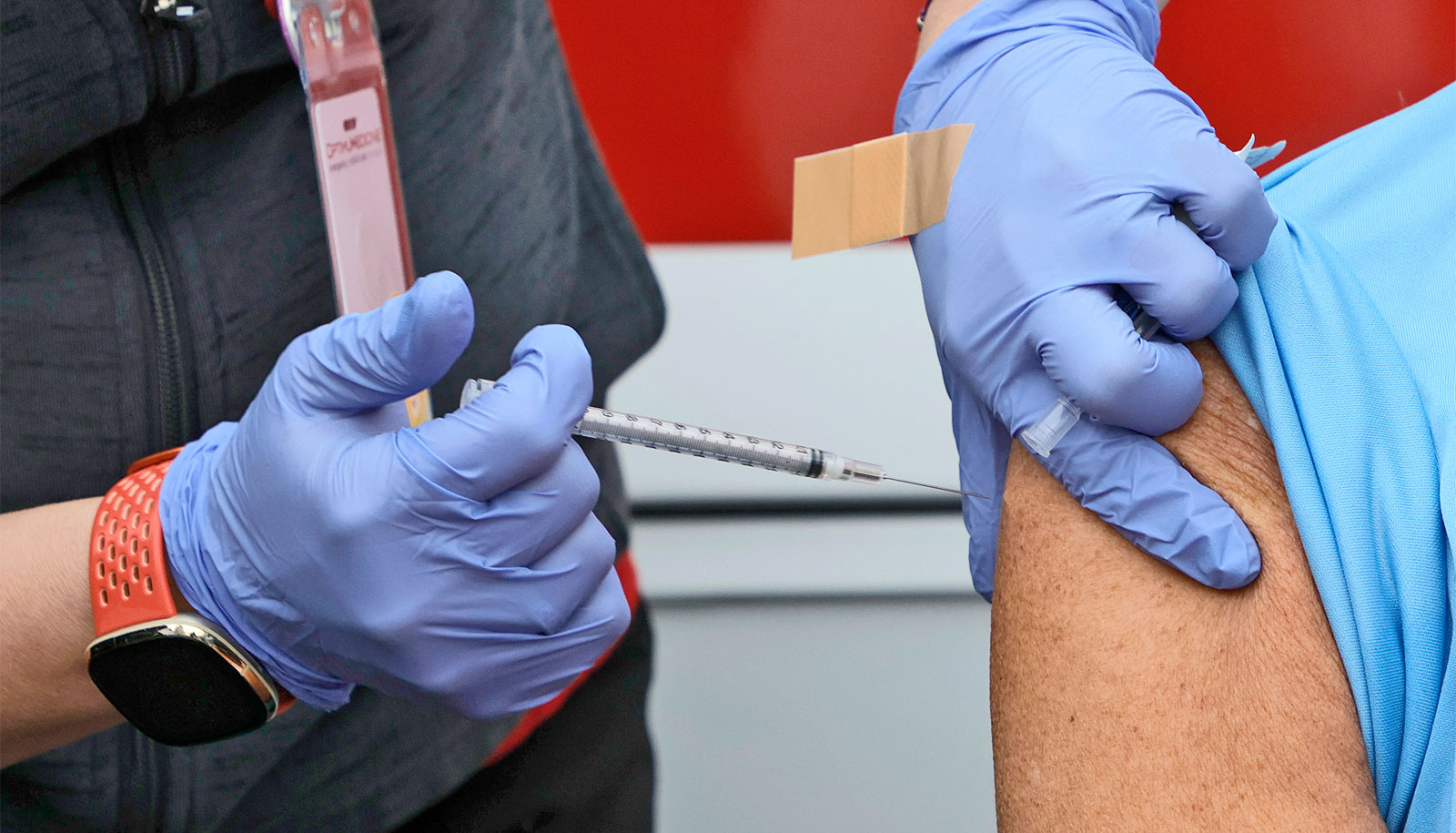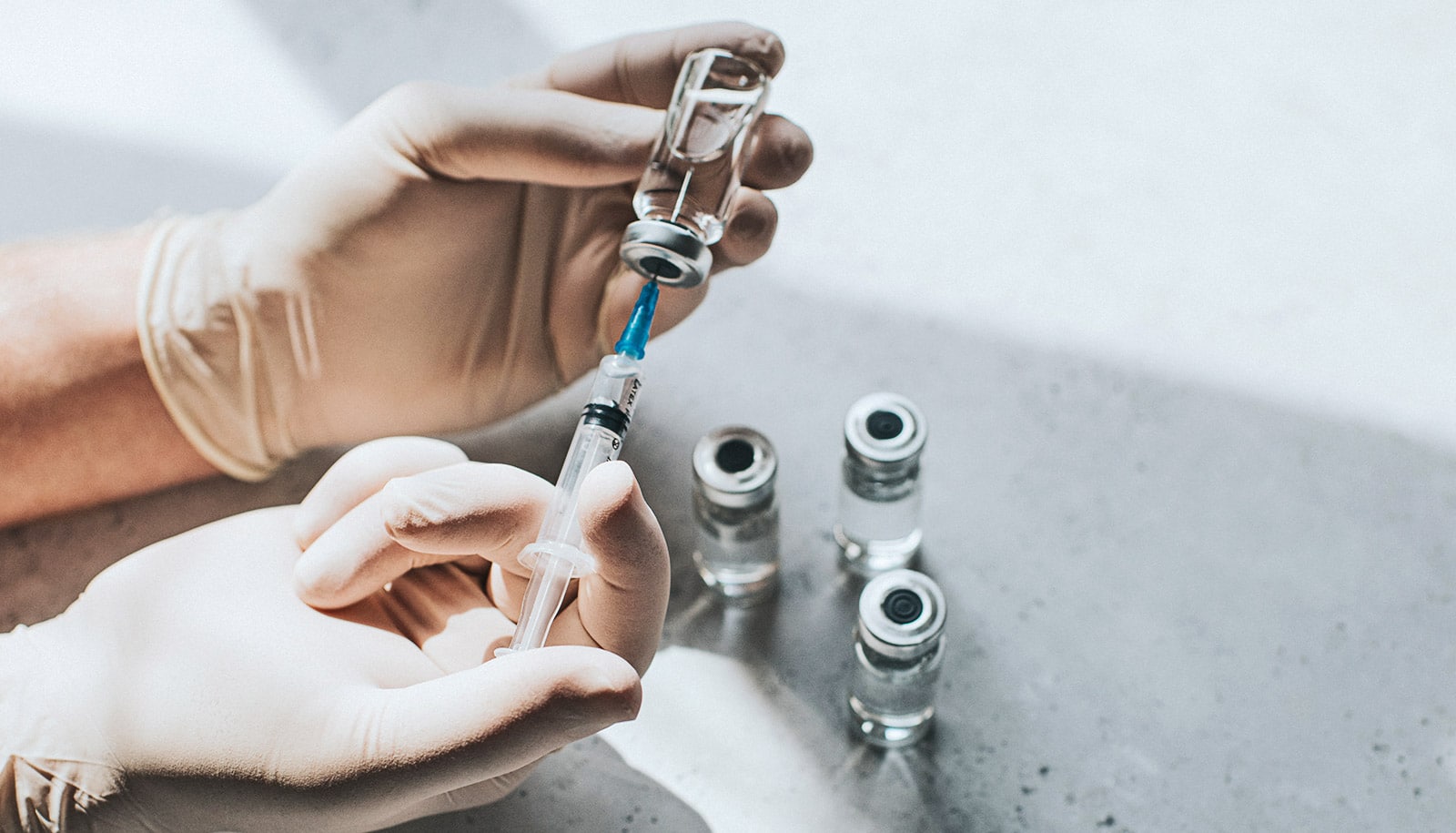Expanding the high-dose influenza vaccine recommendation to include middle-aged adults with chronic health conditions may make economic sense and could save lives.
The findings of a new study call for clinical trials of the high-dose and new recombinant trivalent influenza vaccines in 50- to 64-year-old adults with chronic illnesses, such as heart or lung disease, diabetes, or cancer, to determine if they offer better protection than the currently recommended standard-dose quadrivalent vaccine.
“The growing proportion of middle-aged adults with chronic health conditions coupled with the modest effectiveness of the standard-dose influenza vaccine prompted us to explore whether existing vaccines already recommended for the elderly also could protect younger people,” says Jonathan Raviotta, senior research specialist with the Pittsburgh Vaccination Research Group (PittVax) at the University of Pittsburgh’s School of Medicine and lead author of the study in Vaccine.
Between 12,000 and 56,000 people die annually in the United States from the flu.
“Sure enough, expanding the recommendation does seem like a good policy—in silico. Before making such a recommendation, real world clinical trials are needed.”
The high-dose influenza vaccine is recommended for adults over age 65 because their immune response to the standard-dose vaccine diminishes with increasing age.
However, it’s more expensive—almost twice as much—as the standard-dose quadrivalent vaccine. To test the value of conducting large clinical trials of the vaccine in 50- to 64-year-olds with chronic conditions, researchers used the Influenza Decision Analysis model to explore the cost-effectiveness of alternate influenza vaccination scenarios.
Because the circulating influenza strains can shift from season to season, annual vaccine effectiveness can vary widely. Further, the effectiveness of both the standard-dose and high-dose vaccines among middle-aged patients with different levels of chronic medical conditions is unknown.
Using the best available data, researchers say that the high-dose vaccine would need to provide at least 18 percent more protection than the standard-dose vaccine to justify the increased cost per dose.
Previous clinical trials found an additional 24 percent effectiveness of high-dose vaccine over the standard-dose vaccine in the elderly, but it is not clear how much more effective the high-dose vaccine would be in younger adults with high-risk medical conditions.
Likewise, a newer but even more expensive recombinant vaccine has shown an additional 41 percent protection among adults, suggesting that additional research of vaccine options for high-risk, middle-aged adults may be justified.
These genes may predict how well your flu shot works
Between 12,000 and 56,000 people die annually in the United States from the flu, and up to 35.6 million people are infected, according to the US Centers for Disease Control and Prevention,. This adds up to an estimated $10.4 billion a year in direct medical expenses and an additional $16.3 billion in lost earnings annually.
“PittVax will continue to test new vaccination scenarios to help guide flu immunization recommendations,” says senior author Richard K. Zimmerman, professor of family medicine and behavioral and community health sciences. “These analyses are essential to choosing the best immunization policies that save lives from influenza, which kills thousands annually.”
Other researchers from the University of Pittsburgh and from Carnegie Mellon University and Soongsil University in Seoul, Republic of Korea, are coauthors of the study. The National Institute of General Medical Sciences funded the work.
Source: University of Pittsburgh



